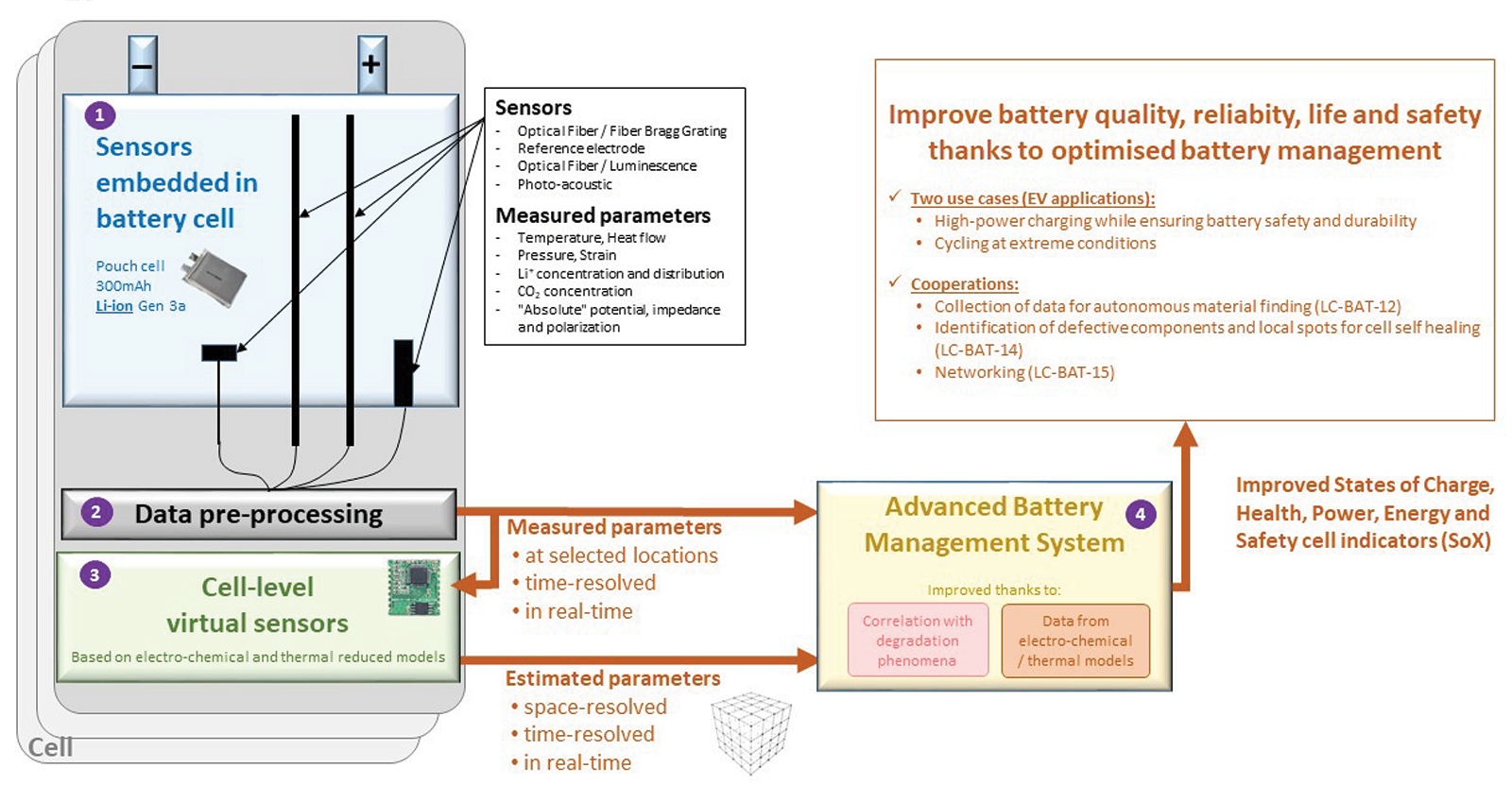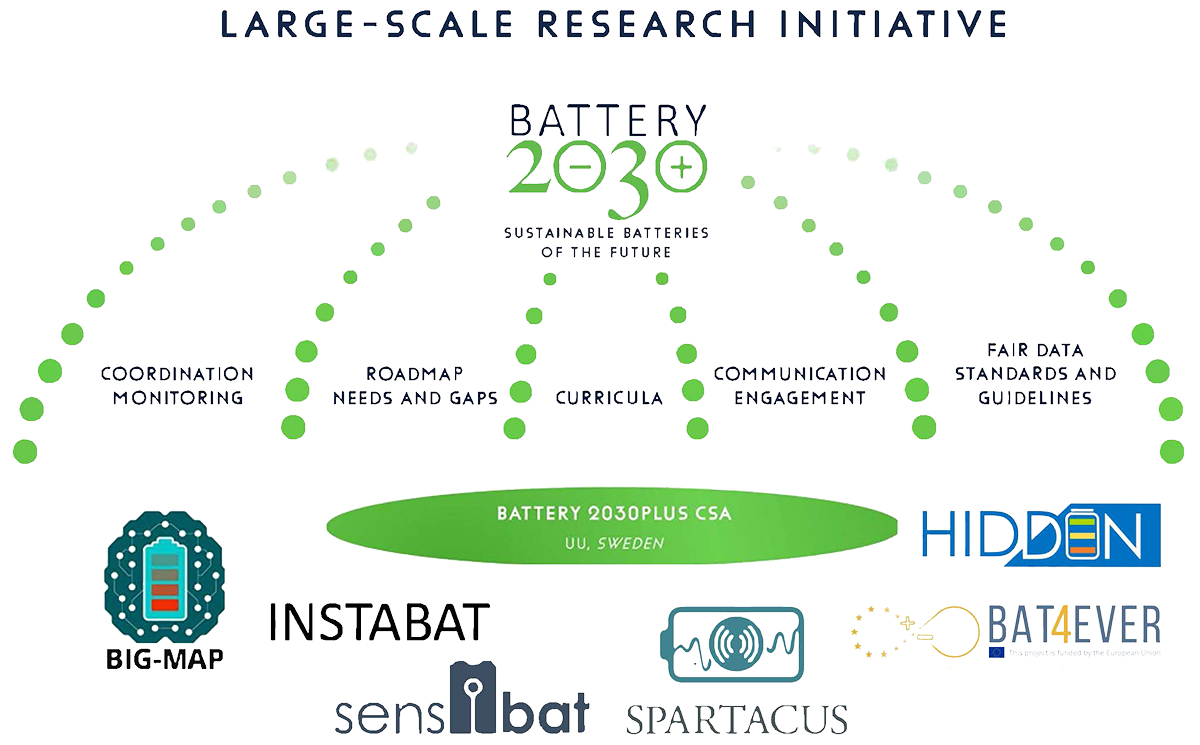THE INSTABAT PROJECT PRESENTATION
INSTABAT is intended to monitor in operando, key parameters of a Li-ion battery cell, in order to provide higher accuracy states of charge, health, power, energy and safety (SoX) cell indicators, allowing us to improve the safety and the quality, reliability and life (QRL) of batteries.
To achieve this goal, INSTABAT will develop a proof of concept of smart sensing technologies and functionalities, integrated into a battery cell and capable of:
- performing reliable in operando monitoring (time- and space-resolved) of key parameters (i.e., temperature and heat flow, pressure, strain, Li+ concentration and distribution, CO2 concentration, “absolute” impedance, potential and polarisation) via:
- four embedded physical sensors (i.e., optical fibres with fibre Bragg grating and luminescence probes, reference electrodes, and photo- acoustic gas sensor) and
- two virtual sensors (based on electro- chemical and thermal reduced models);
- correlating the evolution of these parameters with the physico- chemical degradation phenomena occurring at the heart of the battery cell; and
- improving battery functional performance and safety, thanks to enhanced BMS algorithms providing in real-time higher accuracy SoX cell indicators (taking the measured and estimated parameters into consideration).
The main results will be:
- proof of concept of a multi-sensor platform ( comprising a cell prototype equipped with physical/virtual sensors and associated BMS algorithms providing SoX cell indicators in real -time );
- demonstration of the higher accuracy of SoX cell indicators;
- demonstration of improved cell functional performance and safety through two use cases for EV applications; and
- techno- economic feasibility study covering, for example manufacturability, and adaptability to other cell technologies.
INSTABAT smart cells will open new horizons to improve cell use and performances (e.g., by reducing ageing, allowing decrease of safety margins, triggering self-healing, and facilitating second life ).
Commissariat à l’Energie Atomique et aux Energies Alternatives (CEA), France
Project coordinator: Program manager Olivier Raccurt
Email: olivier.raccurt@cea.fr
Deputy Coordinator: Maud Priour
Email: maud.priour@cea.fr
BATTERY 2030+
BATTERY 2030+ is the large-scale and long-term European research initiative with the vision of inventing the sustainable batteries of the future, providing European industry with disruptive technologies and a competitive edge throughout the battery value chain and enabling Europe to reach the goals of a climate-neutral society envisaged in the European Green Deal.
The BATTERY 2030+ large-scale research initiative has just entered the next phase of creating a generic toolbox for transforming the way we develop and design batteries in Europe. With EUR 40,5 million support from the European Commission over three years, a family of projects will kick-start the implementation of the BATTERY 2030+ long-term research roadmap.
Starting on 1 September 2020, the BATTERY 2030+ initiative will consist of seven projects, one coordination and support action (CSA) BATTERY 2030PLUS, which continues a previous 15-months CSA project, and six research and innovation projects: BIG-MAP, coordinated by DTU Denmark; INSTABAT, coordinated by CEA France; SENSIBAT, coordinated by IKERLAN Spain; SPARTACUS, coordinated by Fraunhofer Germany; HIDDEN, coordinated by VTT Finland; BAT4EVER, coordinated by VUB, Belgium.
The BATTERY 2030+ community works on concrete actions that support the implementation of the European Green Deal, the UN Sustainable Development Goals, the European Action Plan on Batteries and the SET Plan.










